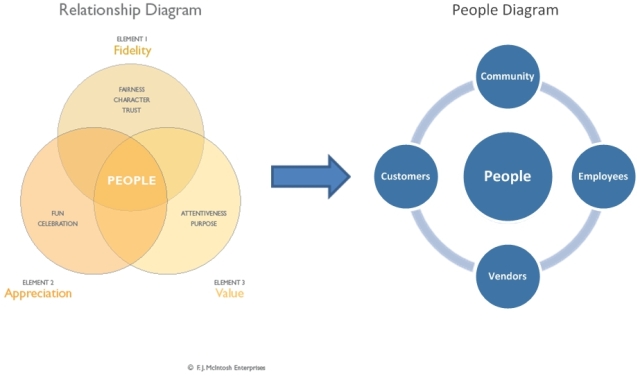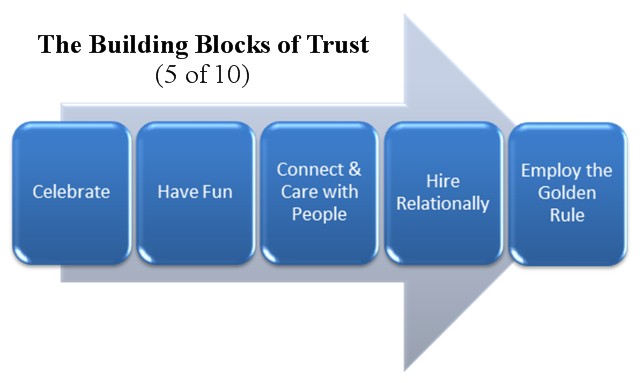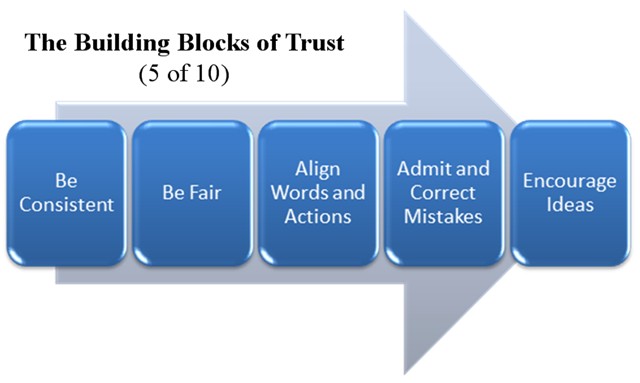The Single Military Strategy Every Business Needs

But there’s a second form of discipline, one that you’ll find in the best military units: intrinsic discipline. Intrinsic discipline occurs when people advance the common good voluntarily. It comes about when people understand the difference between right and wrong and do what’s right—even when the boss isn’t watching or when times are difficult.
Intrinsic discipline is a powerful tool. It creates the trust that’s needed to promote organizational initiatives, it empowers your people, and it produces a durable competitive advantage—all factors that lead to success in business and on the battlefield.
However, intrinsic discipline doesn’t happen by accident. As a leader, you must develop it intentionally, or your teams will get stuck in extrinsic compliance. But where should you start?
1. Define and explain the common good.
The first step to gaining your team’s commitment to the common good is to define and explain it so your people understand what it is, why it’s important, and how the organization will get there.
Xenophon, a pupil of Socrates and an experienced military commander, was the first great thinker in the Western world to outline this component of discipline. According to Xenophon, the first step to intrinsic discipline begins with the leader, who must possess areté—a combination of character and competence—to gain support from followers even in times of great danger.
Xenophon explains that leaders must teach their followers the common good and the difference between correct and incorrect performance and behavior. Defining and explaining the common good will create clear expectations and explain why you’re asking people to do what they do.
“Obedience,” Xenophon tells us, “must be given voluntarily rather than under compulsion.”
2. Gain buy-in by building trust.
The second step is to gain buy-in by building trust. People need to trust their leader, the desired outcomes (your organization’s vision, mission, and goals), and how they’ll reach these outcomes (through values, expectations, and strategies).
As so many studies of human decision-making attest, people make choices based on emotion and then rationalize those decisions. Trust and mutual respect are what create this emotional connection.
Exceptional military leaders understand this. While admonishing the United States Military Academy Corps of Cadets to end the practice of hazing in 1879, Academy Superintendent General John M. Schofield crafted what’s now referred to as “Schofield’s Definition of Discipline,” which still must be memorized by all West Point cadets:
The discipline which makes the soldiers of a free country reliable in battle is not to be gained by harsh or tyrannical treatment. On the contrary, such treatment is far more likely to destroy than to make an army. It is possible to impart instructions and to give commands in such a manner and such a tone of voice to inspire in the soldier no feeling but an intense desire to obey, while the opposite manner and tone of voice cannot fail to excite strong resentment and a desire to disobey.
The one mode or the other of dealing with subordinates springs from a corresponding spirit in the breast of the commander. He who feels the respect which is due to others cannot fail to inspire in them regard for himself, while he who feels, and hence manifests, disrespect toward others, especially his inferiors, cannot fail to inspire hatred against himself.
The takeaway? Leaders who are trustworthy and treat people with respect create an environment in which intrinsic discipline can emerge.
3. Strengthen accountability.
The third step is to strengthen accountability. Accountability means to be answerable. It’s a four-way intersection: up, down, and lateral. Everyone on the team needs to be answerable for doing the right things in the right ways.
Importantly, this includes you as a leader; accountability begins in the mirror. Leaders need to walk the talk and enforce standards consistently so that everyone sees that the standards are essential rather than arbitrary.
As Greek military leader Xenophon explains:
Good workers get depressed when they see that, although they are the ones doing all of the work, the others get the same as they do, despite making no effort and being unprepared to face danger, if need be.
Playing favorites and haphazard enforcement are morale killers—they indicate to everyone involved that the standards and expectations are arbitrary and unimportant. And Xenophon is quite clear that the leader, not the followers, is to blame if the expectations and their importance are unclear or selectively followed.
To illustrate this principle, Xenophon provides examples in his famous work Anabasis of two commanders during the expedition with Cyrus against the Persian king Xerxes in 401 B.C. Both commanders failed in different ways.
Clearchus, a Spartan commander, took pride in his severity, believing that soldiers should fear their superiors more than the enemy. Because his rule was considered arbitrary, many of his men deserted.
In contrast, Proxenus, a Boeotian and a friend of Xenophon, sought to win the love of his soldiers by withholding praise from wrongdoers instead of punishing them. He became an object of contempt, and his soldiers ran roughshod over him.
The bottom line
These three steps—clarity, buy-in, and accountability—are the foundations for intrinsic discipline. They interact like a Venn diagram: Clarity and buy-in without accountability mean that any good results are a matter of luck. Clarity and accountability without buy-in creates compliance only, and people won’t contribute their best. Buy-in and accountability without clarity creates the hamster wheel effect: a lot of activity but no movement toward your goals. Having all three in place helps organizations move from compliance to a deeply inspired culture.
About the Author
Christopher D. Kolenda, Ph.D., founder of the Strategic Leaders Academy, works with leaders who want to apply insights from history and military operations to take their businesses to new heights. He is a West Point graduate, internationally renowned combat leader, retired Army colonel, and former trusted adviser to three four-star generals and two undersecretaries of defense. He’s the author of Zero-Sum Victory: What We’re Getting Wrong About War and Leadership: The Warrior’s Art, a trusted anthology that’s been in print for over 20 years and helped tens of thousands of leaders succeed in combat and business. Learn more at StrategicLeadersAcademy.com.


 Frank McIntosh is author of
Frank McIntosh is author of 
